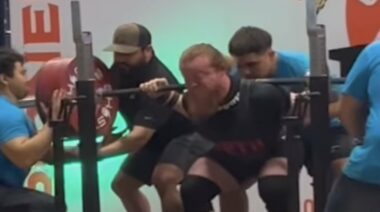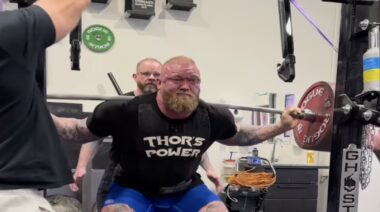The squat has long been the bread and butter of weight lifting programs. It’s easy to see why: it’s hands down the most effective exercise for building strength, speed, and size, and has a remarkable carryover to everything from the vertical jump to Olympic lifts.
When you squat you use pretty much every muscle from the waist down. The big guns – the glutes and deep hip muscles, quadriceps, and hamstrings – provide the main drive. Other muscle groups, such as the abs, spinal muscles, and calves work to stabilize you and keep you from falling over.
The squat sounds like a great exercise to be doing, right? It is a fantastic exercise, but not all squats are created equal.
The most popular squat exercise is the barbell back squat, in which a weighted bar is balanced on the shoulders behind the neck. This is the one we all learned back in high school gym class and the one every powerlifter likes to brag about. But for all its popularity, the back squat hides a dirty secret: it’s one of the most dangerous exercises for your low back, hips, and knees, even when done with perfect form.
To see why, we need to start with a quick biomechanics lesson. The spine is made up of 24 vertebra balanced on top of your pelvis that are separated by fluid-filled shock absorbers called discs. The spinal cord travels down the middle of each of the vertebra and exits the spine as peripheral nerves through spaces posterior to the discs called foramina.
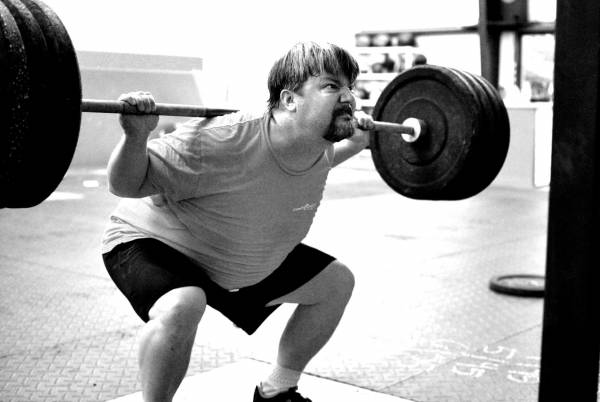 There are four major groups of muscles that keep everything balanced in place: the abdominals and glutes working in opposition to the hip flexors and lower spinal muscles. When these sets of muscles are the proper length and strength, life is good (as far as biomechanics go). However, when your abdominals and glutes are weak/lengthened or your lower spinal muscles and hip flexors are tight/shortened, your pelvis tilts forward. This is what’s known as lower cross syndrome, and in this day and age it’s rare to find someone who doesn’t have some degree of forward pelvic tilt due to the amount of sitting most of us do on a daily basis and the extra weight so many people keep in their butts and guts.
There are four major groups of muscles that keep everything balanced in place: the abdominals and glutes working in opposition to the hip flexors and lower spinal muscles. When these sets of muscles are the proper length and strength, life is good (as far as biomechanics go). However, when your abdominals and glutes are weak/lengthened or your lower spinal muscles and hip flexors are tight/shortened, your pelvis tilts forward. This is what’s known as lower cross syndrome, and in this day and age it’s rare to find someone who doesn’t have some degree of forward pelvic tilt due to the amount of sitting most of us do on a daily basis and the extra weight so many people keep in their butts and guts.
Why should we be concerned about pelvic tilt? First, it’s one of the most common root causes of chronic low back pain, as tilting the pelvis forward pushes the sacrum (tailbone) up and back, closing off the foramina between the base of your spine and your sacrum. Nerves and surrounding soft tissues are incredibly sensitive, so it makes sense that they will be irritated by any change in the size or shape of these foramina spaces. This can lead to low back pain and swelling and potentially even more disabling conditions like sciatica. Second, it puts extra pressure on the posterior aspect of the discs in the lower back, forcing them into a wedge shape that increases the risk of a bulge or herniation.
The problem with back squats is that it’s next to impossible to perform them with a completely erect spine and pelvis. Any time you lean forward and arch your back you’re tightening/shortening your low back muscles and hip flexors and lengthening your abdominals and glutes. Add in a bunch of compressive weight over a span of 25 or 30 reps several times per week and it’s easy to see how back squats encourage anterior tilting pelvic positioning.
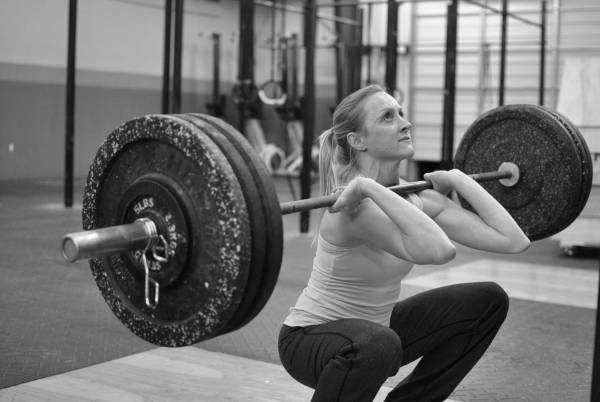 So now we can talk about front squat. Unlike the back squat, if you lean too far forward on a front squat you’ll drop the weight, so you have no choice but to keep your spine and pelvis upright. In addition, because front squats generally require less weight to get the same effect on the body, they put less compressive and shear force on the knees, lowering the risk of meniscus or ligament damage.
So now we can talk about front squat. Unlike the back squat, if you lean too far forward on a front squat you’ll drop the weight, so you have no choice but to keep your spine and pelvis upright. In addition, because front squats generally require less weight to get the same effect on the body, they put less compressive and shear force on the knees, lowering the risk of meniscus or ligament damage.
Wait, I said the front squat requires less weight for the same effect? Weightlifting mythology may have you believe that the back squat activates more muscle fibers or that the front squat will primarily target the quadriceps, but that’s not so. A 2009 study published in the Journal of Strength and Conditioning Research found:
- There is no difference between front and back squats in which muscles are being activated.
- Front squatting less weight results in the same muscle activation as back squatting more weight.
That last part is important. You won’t be able to front squat the same amount of weight as you back squat, but it’s okay. You’ll still be working those muscles just as hard.
Ready to switch over? Here’s a quick rundown of key points for safe and effective front squatting:
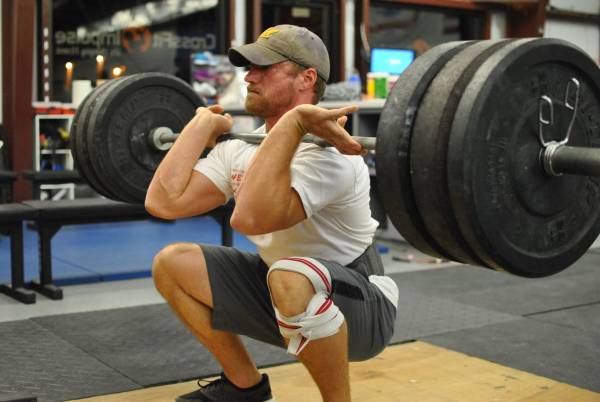 Use a clean grip instead of a cross-arm grip, but remember that your chest and shoulders support the weight, not your hands.
Use a clean grip instead of a cross-arm grip, but remember that your chest and shoulders support the weight, not your hands.- Your feet should be approximately shoulder-width apart and your toes should always line up with your knees. Rotate your feet out about twenty degrees and keep them flat on the floor throughout the entire exercise.
- Push your chest out and keep your elbows up. This provides a solid base for the bar to rest on and prevents you from rounding your upper-back.
- Focus on a point in front of you instead of looking up. Prolonged cervical extension is bad for your neck.
- Push your hips back like you’re sitting down in a chair. Keep your knees behind the front of your toes during the entire movement.
- Descend slowly until your thighs are parallel to the floor (or deeper if you can), push from your heels and drive upwards. Don’t bounce out of the squatting position.
References:
1. Gullett JC, Tillman MD, Gutierrez GM, Chow JW. A biomechanical comparison of back and front squats in healthy trained individuals. Journal of Strength and Conditioning Research. 2009 Jan;23(1):284-92.
Photos courtesy of CrossFit Impulse.



